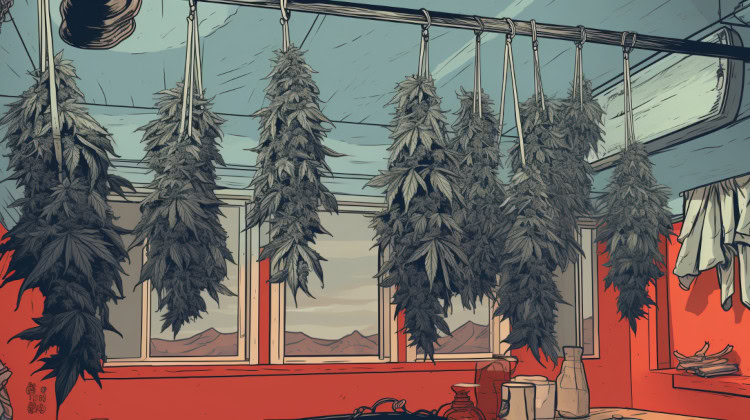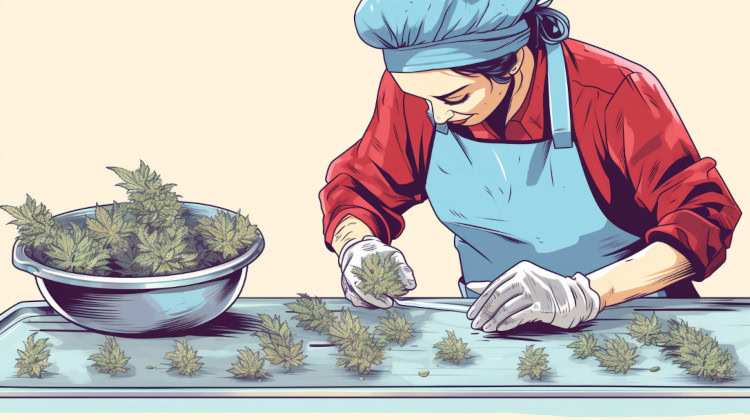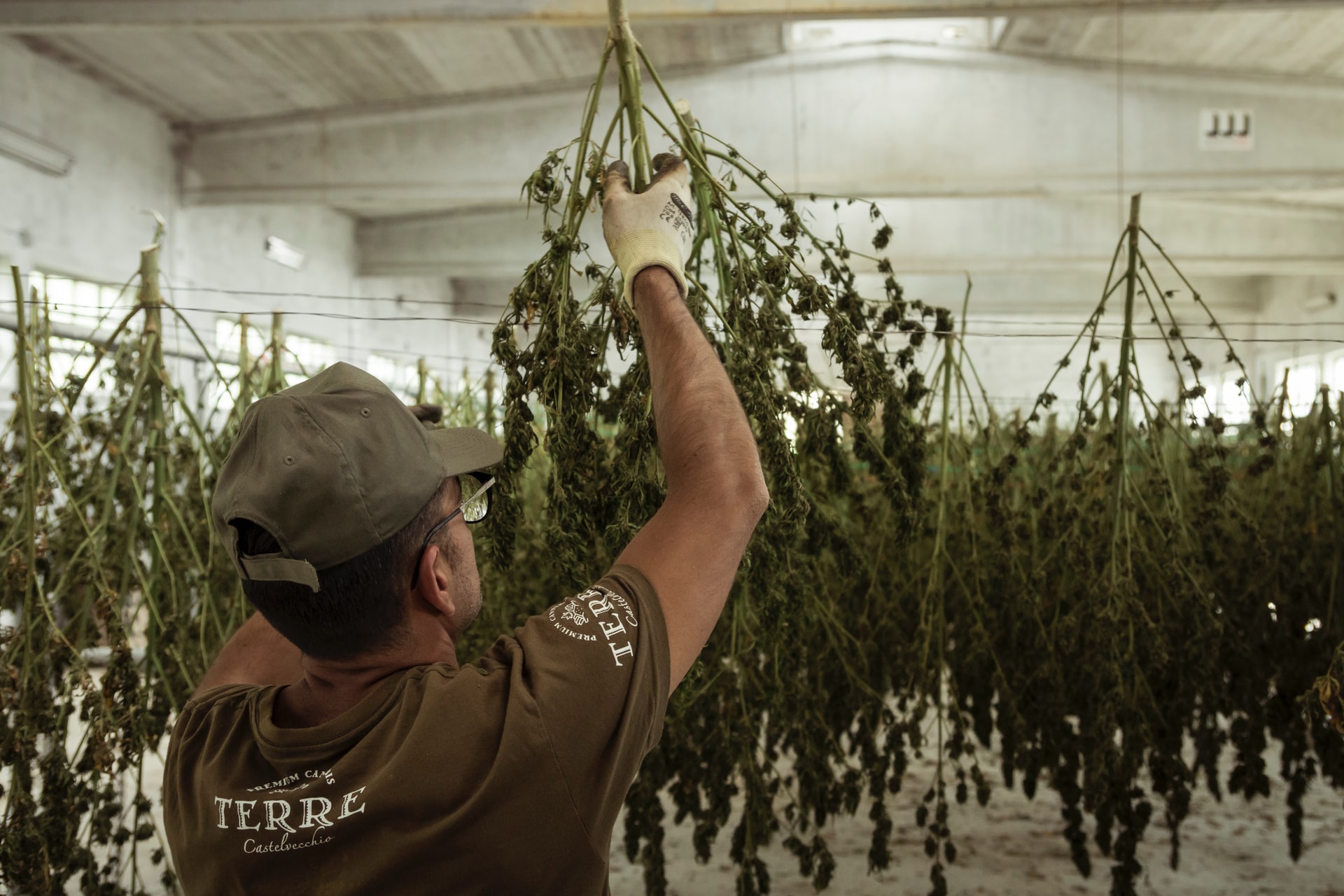Key Takeaways
- Smoking wet or uncured cannabis is not recommended due to combustion issues and potential health risks.
- Wet weed can develop mold, irritate the lungs, and degrade the smoking experience.
- Proper drying and curing improve safety, potency, and flavor.
Do things that are dried burn better than things that are wet? Of course, they do! This principle remains the same for cannabis. Cannabis that’s dried will burn more easily, more cleanly, and more completely than cannabis that’s not dried.
So if bud that’s dried is the best option to smoke, can you smoke wet weed? Plenty of cannabis consumers wonder if they can safely smoke freshly picked buds or ones that have gotten wet. There are good reasons why cannabis is dried and cured.
Soggy Weed vs. Wet Drugs: An Important Distinction
Before we answer this article’s main question, we must go over a definition. This article refers to cannabis that’s gotten wet, such as from rain or condensation. However, cannabis that’s gotten wet (like the kind we’re discussing in this article) is very different from “wet” cannabis.
“Wet” cannabis is the term used for cannabis that has been laced with other substances, such as PCP or formaldehyde. “Wet” cannabis can be extremely dangerous, as it’s difficult to know what you’re consuming and the risks that could come along with those substances. “Smoking wet” is not something that’s recommended, as it carries a significant risk and can bring about dangerous and unpredictable effects and health consequences..
“Wet” cannabis is one of the main reasons why it’s important to purchase your products from a licensed dispensary. When you do this, you can be sure what you’re purchasing and not need to worry about additional substances you may be consuming upon use. Many cannabis brands have websites that provide more information about their practices and methods, which can be another helpful way of understanding the products that you’re purchasing.
From this point forward, we’ll be referring to weed that’s gotten wet or soggy, not the other meaning of “wet” weed.
Why is Weed Dried and Cured?

Most cannabis that you purchase will have already been dried and cured. But why is this so important?
Naturally, cannabis contains 70-80% moisture, which needs to be reduced in order to aid the smoking process.1 Another significant benefit of reducing moisture content in cannabis is that it can prevent the cannabis itself from molding or growing unwanted biological contaminants.2
Drying cannabis can help you smoke it easier and help it last longer, but why is curing it also so important? Through the curing process, certain compounds mature, and their quality is heightened.
Curing cannabis is essential for its preservation, but there’s one other difference that it can make: Cannabis that hasn’t been cured properly could potentially lead to discomfort while smoking due to the starches and other biological components that haven’t been broken down. Some individuals have reported that their throat feels like it’s burning when they smoke cannabis that was not properly cured.
What Happens if Weed Gets Wet?
If you have some weed that’s gotten wet, then you’re probably wondering whether or not it’s safe for you to use it. When weed that’s already been dried and cured gets wet, it may cause mold growth during storage.
My Weed Got Wet; Can I Still Smoke It?

Smoking wet weed isn’t recommended, as it may irritate the lungs or increase the risk of mold exposure, especially in sensitive individuals. If you have some damp cannabis, it’s most likely best for you to safely discard it and start again with a dry option.
While damp (but not moldy) weed may not always cause harm, inhaling moisture can affect combustion and potentially irritate the respiratory system. When in doubt, it’s best to err on the side of caution.
If you have weed that’s started to mold, you should move on to another option. Smoking moldy weed is not recommended and could result in a variety of health concerns, so consider taking a trip to your local dispensary and selecting some bud that you can trust.
Can You Smoke Wet Weed After Drying It?
Curing cannabis requires a glass jar (preferably) where you can store the bud and a dark room that’s around 65 degrees Fahrenheit. It’s important that you maintain the proper humidity level within the jars, which should be around 60%. Next, you must also “burp” the jars at least once per day, depending on how long your cannabis has been curing.
The ideal drying area:
- Secure, especially from children and pets
- Enough space to hang cannabis upside down to dry completely
- Well-ventilated
- Consistently between 60℉ and 70℉
- Low humidity at between 55% and 65%
Essential tools for drying weed:
- At least one fan to ensure air circulation
- A thermometer to monitor the temperature
- A hydrometer to measure humidity
- A line to hang the cannabis
- Clips to secure the cannabis
Now you’re ready to hang your buds up and let them dry!
Some people try methods like placing flower in rice or using sunlight, though these aren’t ideal and may reduce potency or cause uneven drying. Use caution and check for mold before use. If you’re unsure about whether your cannabis is still safe to use, it's always a good idea to speak with a budtender or your healthcare provider.
Alternatives to Smoking Wet Weed

If you have cannabis that’s gotten wet or hasn’t been cured yet, there are still several options besides smoking it. Making edibles or rosin can be a great way to skip some steps and ensure a great end result.
Some people choose to flash freeze their uncured cannabis. This means that you’ll be able to make “live” extracts from it, such as live resin and live rosin. If you choose to use this type of cannabis to make edibles, you’ll still need to go through the decarboxylation process.
References
- Das PC, Vista AR, Tabil LG, Baik OD. Postharvest Operations of Cannabis and Their Effect on Cannabinoid Content: A Review. Bioengineering (Basel). 2022;9(8):364. Published 2022 Aug 3. doi:10.3390/bioengineering9080364 ↩︎
- AL Ubeed HMS, Wills RBH, Chandrapala J. Post-Harvest Operations to Generate High-Quality Medicinal Cannabis Products: A Systemic Review. Molecules. 2022; 27(5):1719. https://doi.org/10.3390/molecules27051719 ↩︎
The information in this article and any included images or charts are for educational purposes only. This information is neither a substitute for, nor does it replace, professional legal advice or medical advice, diagnosis, or treatment. If you have any concerns or questions about laws, regulations, or your health, you should always consult with an attorney, physician or other licensed professional.




